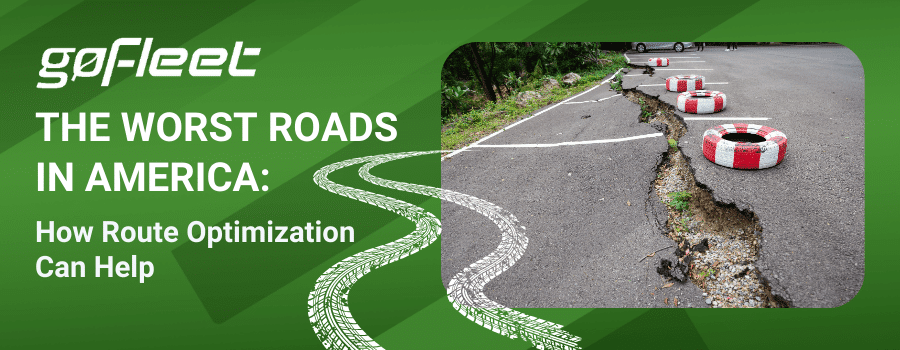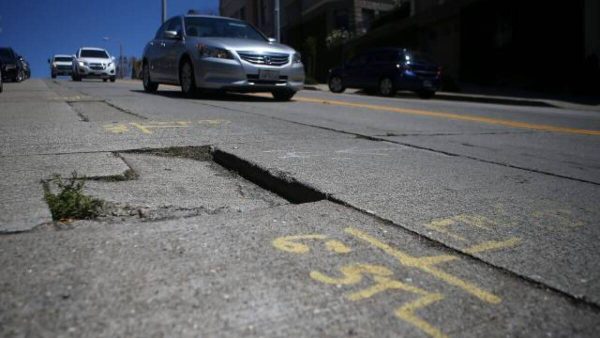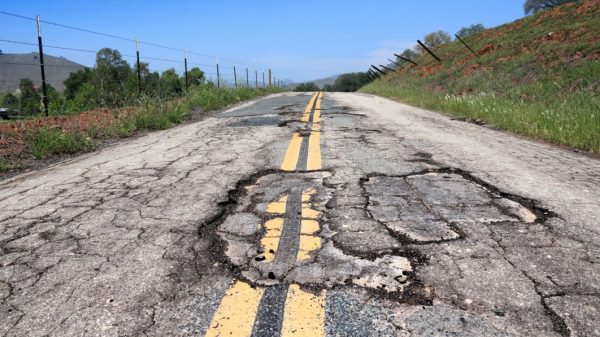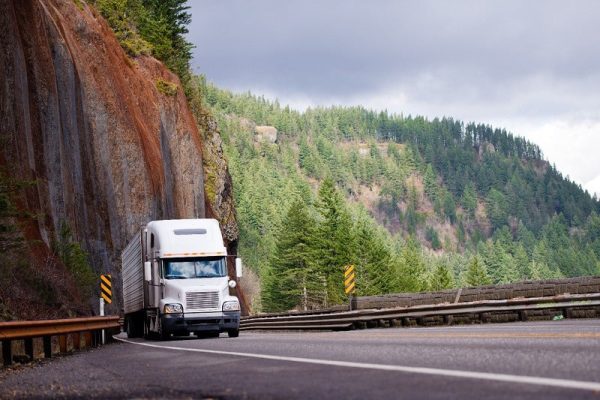Imagine driving down a road filled with potholes, cracks, and uneven surfaces – sounds like a nightmare, right? Unfortunately, this is a reality for many drivers in America. States like California and Rhode Island are notorious for having some of the worst roads in the country. According to recent data, 44% of California’s urban roads and 41% of Rhode Island’s roads are in poor condition, making them some of the worst in the nation. These poor road conditions can lead to increased vehicle repair costs, higher maintenance bills, and, most importantly, safety hazards for drivers.
Navigating through these problematic areas can be challenging, but there’s a solution! Route optimization through telematics can help drivers avoid the worst roads, saving time, money, and ensuring safer journeys. By leveraging advanced technology, fleet managers and individual drivers can plan routes that steer clear of troublesome spots, making every trip smoother and more efficient. In this post, we’ll explore the worst roads in America and how route optimization can make a difference.
Where are the Worst Roads in America?
Several studies highlight the states with the worst road conditions in America. According to recent data, California and Rhode Island top the list for the worst road roughness. In California, 44% of urban roads are in poor condition, while in Rhode Island, 41% of roads suffer from similar issues. These states, along with others like Louisiana and New York, face significant challenges in maintaining road quality despite substantial spending on road improvements.
What is the Impact for Drivers?
One of the most immediate consequences is increased wear and tear on vehicles. Potholes, cracks, and uneven surfaces can lead to frequent repairs and higher maintenance costs. Drivers often have to replace tires, fix alignment issues, and address suspension damage more frequently than they would on better-maintained roads.
Moreover, safety is a significant concern. Poor road conditions can increase the risk of accidents, as drivers might lose control of their vehicles when navigating through rough patches. The constant need to maneuver around potholes can also lead to distracted driving, further elevating the risk of collisions. For instance, California’s high traffic volume exacerbates these issues, contributing to a higher rate of motor vehicle-related fatalities.
What is Route Optimization?
Route optimization is the process of determining the most efficient routes for vehicles to take to reach their destinations. This involves using algorithms and various data inputs to minimize travel time, reduce fuel consumption, and avoid obstacles such as traffic congestion and poor road conditions.
Route optimization software considers multiple factors, including distance, road quality, traffic patterns, and vehicle capabilities, to generate the best possible route for a given set of conditions. This technology offers several benefits:
- Reduced Travel Time: By calculating the most efficient routes, route optimization minimizes the time drivers spend on the road. This not only ensures timely deliveries but also allows for more deliveries to be made in a shorter period.
- Fuel Savings: Optimizing routes helps reduce unnecessary driving, which in turn cuts down on fuel consumption. This can lead to substantial cost savings, especially for fleets with many vehicles.
- Enhanced Safety: Avoiding poorly maintained roads and congested areas reduces the risk of accidents. Route optimization can direct drivers through safer routes, enhancing overall safety for both the drivers and the vehicles.
- Improved Vehicle Longevity: By steering clear of rough roads, route optimization helps minimize wear and tear on vehicles, leading to fewer repairs and longer vehicle lifespans.
- Environmental Benefits: Reduced fuel consumption also means lower emissions, contributing to a decrease in the environmental footprint of transportation activities.
What Role Does Telematics Technology Play?
Telematics technology collects and transmits data on various aspects of vehicle performance and road conditions, which can then be analyzed to optimize routes. Incorporating telematics into route optimization ensures that fleet managers can make data-driven decisions, improving efficiency and safety while reducing costs and environmental impact.
Key features of telematics that support route optimization include:
- Real-Time GPS Tracking: This provides up-to-date information on vehicle locations, allowing for dynamic route adjustments based on current traffic and road conditions.
- Data Analytics: Telematics systems analyze data on driving patterns, fuel consumption, and road quality to identify the most efficient routes.
- Automated Reporting: Detailed reports generated by telematics systems help fleet managers monitor performance and make informed decisions about route planning.
- Driver Behavior Monitoring: By tracking driving habits, telematics can suggest routes that minimize risky driving behaviors and enhance safety.
How Route Optimization Can Help
Route optimization helps drivers avoid the worst roads by providing alternate routes that bypass areas with known poor conditions. GoFleet’s route optimization software, integrated with the MyGeotab fleet management system, allows users to create efficient routes that steer clear of troublesome spots, thus minimizing the wear and tear on vehicles. This software analyzes real-time data and historical route performance to suggest the best possible paths for your drivers, ensuring a smoother and safer journey.
Real-Time Adjustments
GoFleet’s system offers dynamic route planning, which means it can respond to unexpected changes like traffic jams, road closures, or adverse weather conditions. This flexibility ensures that drivers can always take the most efficient route, reducing travel time and avoiding delays.
Cost Savings
By avoiding deteriorated roads, route optimization can lead to significant savings on vehicle repair and maintenance costs. Bad roads can cause extensive damage to vehicles, resulting in higher maintenance bills. With route optimization, fleets can reduce the number of miles traveled on poor roads, thereby lowering the risk of damage and extending the lifespan of their vehicles. Additionally, optimized routes mean less fuel consumption, contributing to overall cost savings.
Improving Safety
Avoiding poor road conditions not only saves money but also enhances safety. Bad roads are a common cause of accidents and vehicle damage. By providing safer, optimized routes, route optimization helps protect drivers from the hazards of rough roads. This proactive approach to route planning ensures that drivers are less likely to encounter dangerous situations, leading to safer journeys for everyone on the road.
If you’re looking to navigate better and safer journeys, consider implementing route optimization in your fleet operations. This powerful tool can revolutionize the way you manage your routes, ensuring enhanced efficiency, significant cost savings, and improved safety for your drivers. By leveraging advanced route planning technology, you can avoid the worst roads, reduce wear and tear on your vehicles, and deliver superior service to your customers.



